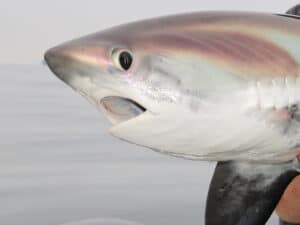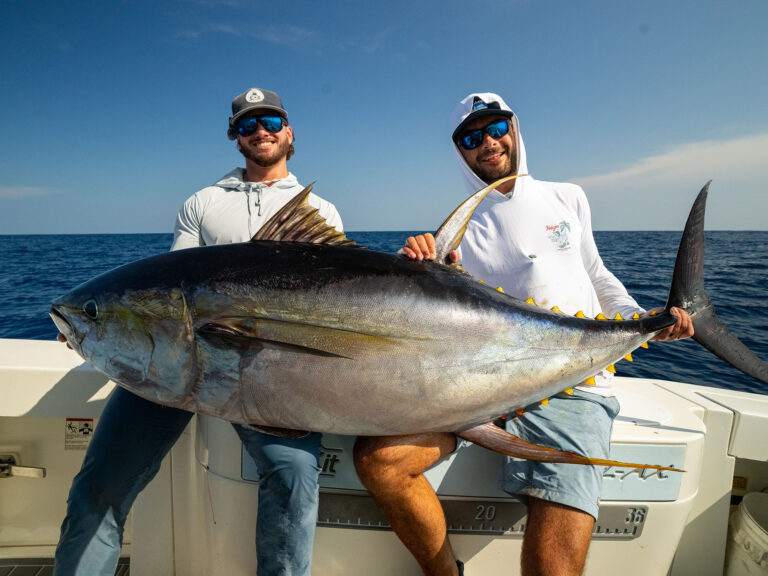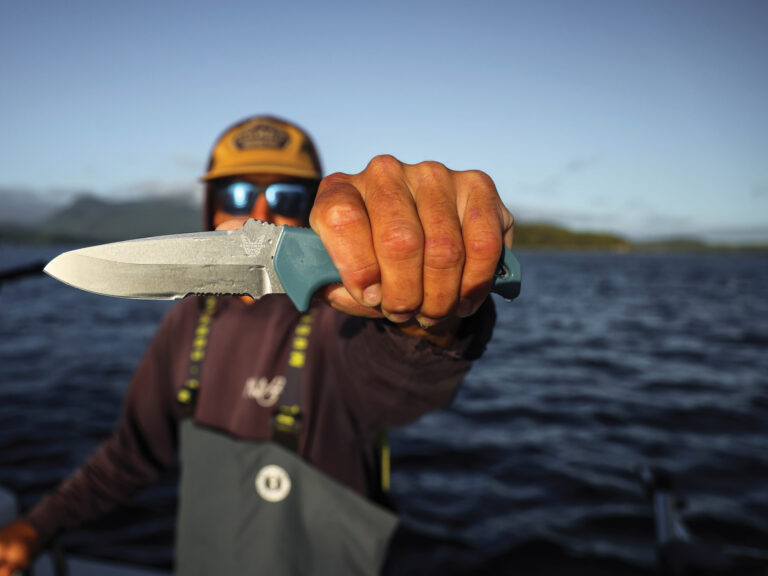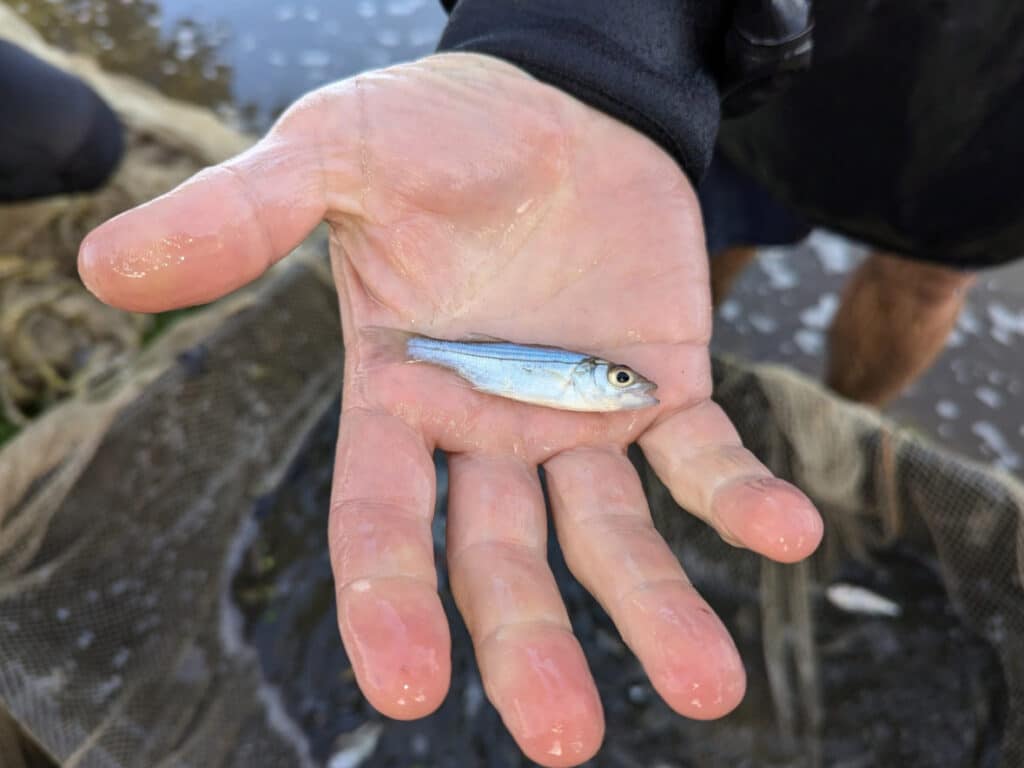
The 2025 Chesapeake Bay young-of-year striped bass surveys are in, and although they show an uptick from the previous two years, the numbers remain below historic averages. Low reproductive success will likely drive continued careful management of the fishery and strict regulations for recreational anglers.
“Management actions taken over the last decade have resulted in a healthy population of spawning-age striped bass,” said Maryland Department of Natural Resources (DNR) Fishing and Boating Services director Lynn Fegley. “However, continued low numbers of striped bass entering the population is a threat to this progress as there are fewer juveniles growing into spawning adults. Maryland will continue working with partner states along the coast to ensure responsible management of striped bass given recent low reproduction rates.”
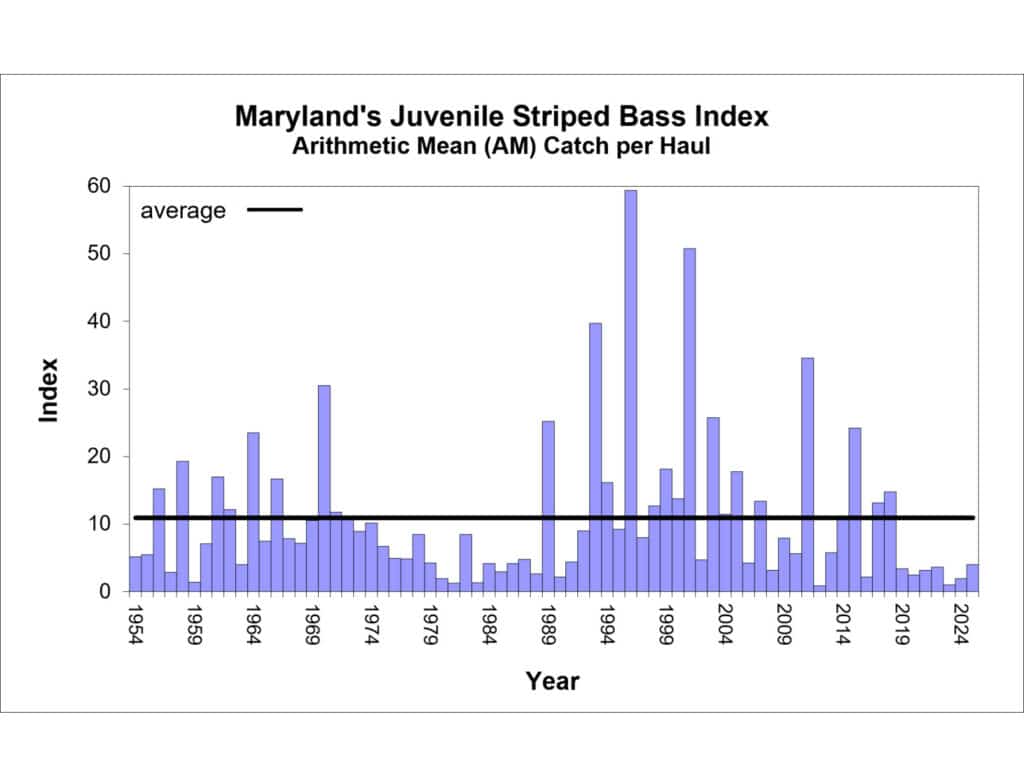
Juvenile Striped Bass Numbers
Both Virginia and Maryland surveys showed young-of-year indexes that were below average in 2025. It’s the fourth consecutive year of low recruitment for Virginia’s survey and the seventh year in a row for Maryland’s numbers to come in below average. These indexes are generated by counting the number of juvenile, less than 3-inch, striped bass collected in seine nets at numerous known striped bass spawning areas.
Maryland DNR’s young-of-year index for 2025 was a disappointing 4.0, which is step up from the abysmal indexes of 1.0 in 2023 and 2.0 in 2024, but it’s still a long way off the long-term average of 11.0.
Virginia’s survey, which is conducted by researchers at William & Mary’s Batten School and the Virginia Institute of Marine Science (VIMS), recorded a mean value of 5.12 fish per seine haul, which is closer to that survey’s historic average of 7.77. In a VIMS report, 5.12 fish was called average.
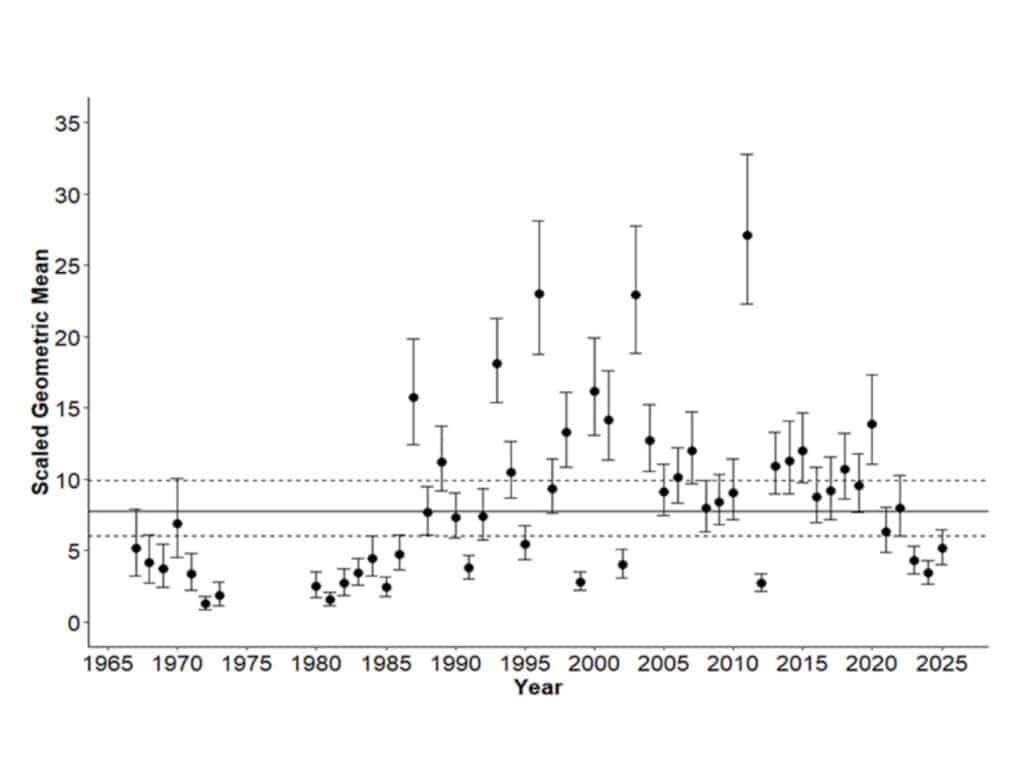
Striped Bass Reproduction
Striped bass reproduction experiences peaks and valleys naturally from year to year with success dependent on a number of factors such as water conditions and available food for newly hatched stripers. Weather and tides play a huge role in survival of eggs and larvae.
When male and female striped bass make their spring spawning runs up into brackish and fresh waters of Chesapeake Bay tributaries, eggs are released and then fertilized through broadcast spawning. Fertilized eggs must remain suspended in the water for one to three days in order to hatch. They are not neutrally buoyant and sink to the bottom without adequate current. Those that do settle to the bottom are unlikely to hatch.
Drought and warm winter temperatures have hindered reproductive success in recent years. According to Maryland DNR and anecdotally from striped bass anglers, the population of spawning-sized striped bass is healthy. There are plenty of fish spawning, but juveniles are not surviving to join the spawning stock in adequate numbers.
An Atlantic States Marine Fisheries Commission 2024 striped bass stock assessment report indicates the stock remains overfished but is not experiencing overfishing. Fishermen and fisheries managers continue to wait on good conditions and a few good years of spawning success.

